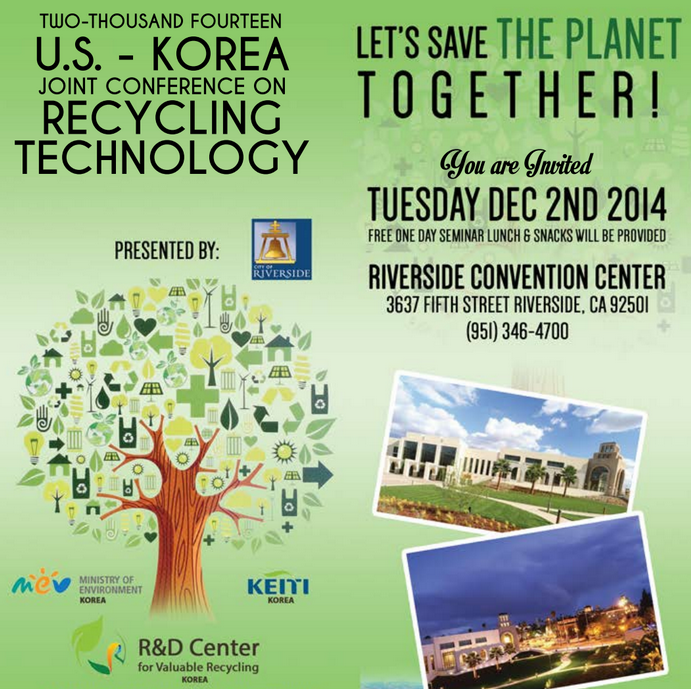Industry – The USA and South Korea held a conference in California this week about recycling issues. The conference addressed the recycling of a wide range of products that enter the waste stream.
The one day conference was organized by the Research & Development Center for Valuable Recycling (RDC) from South Korea and its North American partner, Inkor Technologies (based in Santa Monica, CA). The primary objective was to introduce the RDC’s latest technological advancements in the area of recycling.

In general, recycling has become an industry by itself that is driven by profit just as much as any other company in the world. As RDC explains, the small country of South Korea had long focused on recycling as a measure to dispose of waste, being forced into this option due to the limited availability of landfill areas.
The conference addressed topics including large appliance waste, e-waste, polyurethane, polyethylene terephthalate and flat panel recycling. CE products which include a display can be some of the most difficult products to recycle. This is certainly borne out by some of the horror stories that are reported about recycling cities in some parts of Asia that use less than safe processes to recycle valuable materials from the e-waste.
While we like to write about the latest display technologies and their use in CE as well as Pro AV products, we often forget what will happen after the latest CE gadget has been replaced with a newer gadget. Even if these are passed down to someone else, eventually they will end up in the waste stream as e-waste. As technology comes up with more and more integrated components and makes the overall package smaller and smaller, recycling technology has to develop as well.
The optimum solution for recycling tends to be the reuse of materials by breaking down the old components to create new raw materials from them. This approach works very well for materials like glass and metals, while plastics often enter the material stream for other end products. The best example for this kind of approach is the recycling of CRT glass in the past. CRT glass contained varying amounts of lead and achieved a high degree of recycling. The question is what happened with this recycling stream after the display technology shifted to LCD technology? As CRT tubes were going through the recycling stations, glass factories had no intention of buying the lead containing glass as the demand for CRT glass was winding down.
Similar situations could develop with the first LCD glass. The first generation type of LCD glass still contained heavy metals such as arsenic and others. Even if recycled, they could not enter the new glass stream as compositions have changed.
It seems that whenever we come up with new technologies, there are also some unintended consequences. This applies also to the latest technologies such as OLED and quantum dot LCDs. We will have to learn to look at new technologies from complete life-cycle perspective to avoid such pitfalls in the future. Conferences like the above and research into recycling technology could help with that. – Norbert Hildebrand

